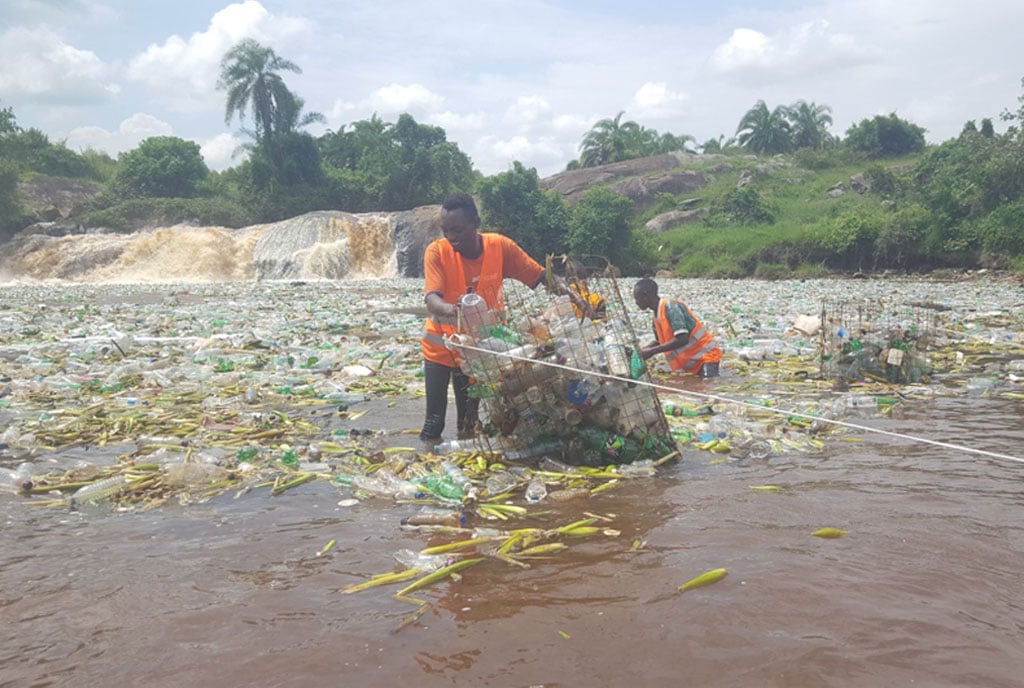Prime
Microplastics choking agriculture - Scientists

Plastic bottles floating on River Rwizi. Plastic materials irresponsibly disposed end up in water channels. Apart from compromising aquatic life, even agriculture production that depends on such water bodies is affected. PHOTO/COURTESY
What you need to know:
- Environmentalists are concerned that people are sending tonnes of plastic into the soils each year, potentially affecting crops, livestock and human health.
Plastic is all around us but it is threatening the future of agriculture. A new World Wildlife Fund (WWF) report says the fossil-fuel derived substance has reached an alarming level and is choking livelihoods, including agriculture, across the world. The wildlife group is calling for creating an international treaty on plastics.
WWF, which is leading a campaign against the uncontrolled disposal of plastic waste, says that plastics have infiltrated all parts of the environment with water bodies at the highest risk.
Through the 2022 edition of the “Earth Hour” initiative, the international organisation wants to make Uganda a cleaner country.
ALSO READ: Can Uganda win the war on plastics?
Uganda is the scene of a fierce battle against plastic pollution as 600 tonnes of waste produced every day in Kampala end up in the environment.
This is one of the many reasons behind the launch of “Earth Hour” 2022, a month-long campaign, whose mission is to encourage people to change their mind-set. The campaign also highlights the need to rethink plastic not as a waste product, but as a resource.
“We continue to harm nature through irresponsible practices such as the indiscriminate use of plastics and the thoughtless disposal of plastic waste. This is one of the main causes of environmental degradation in the world today,” says David Duli, WWF’s country director.
Harming agriculture
Microplastics arrive on farms in many forms including irresponsible disposal, contaminated water, fertiliser, plastic mulches, and are even slow-release fertilisers.
Plastic is widely used in agricultural systems with great benefits because it is cheap. It is used in producing and protecting food, for irrigation and silage bags as well as fishing gear.
But the Food and Agriculture Organisation (FAO) says the use of plastics had become inescapable and that most are single-use and were buried, burned or lost after use.
FAO estimates 12.5m tonnes of plastic products were used in plant and animal production in 2019, and a further 37.3m in food packaging.
“However, despite the many benefits, agricultural plastics also pose a serious risk of pollution and harm to human and ecosystem health when they are damaged, degraded or discarded in the environment,” the report says.
When disposed, plastics degrade into smaller pieces, known as microplastics, which are ingested by the aquatic animals and livestock raising concerns over food supply.
Plastics also raise issues of plant health as plastic-contaminated soils had drainage problems, with water pooling on the surface.
Further impacts include suffocating earthworms, which are widely considered a boon to farming because of their ability to aid decomposition, add organic nutrients to the soil and increase soil aeration.
Italian scientists also reported last year that they had detected microplastics in supermarket produce such as carrots, lettuce, broccoli, potatoes, apples, and pears.
Microplastics have previously been detected in honey, beer, and seafood.
With uncontrolled pathways into human food systems, ingestion of microplastics by humans is practically unavoidable.
“Our existing Lake Victoria is facing serious problems. The rampant pollution and part of irresponsible consumption and insufficient disposal of plastics leave the lake choking, so are our lives,” Duli says stressing WWF’s dedication to end plastic pollution.
In Lake Victoria, 20 percent of species are threatened with extinction due to plastics, according to a 2018 report by the International Union for Conservation of Nature (IUCN).
What to do
Since microplastics enter agricultural systems through a variety of means, addressing this issue would require a multi-tiered approach.
Duli says that in order to reduce the amount of plastic that ends up in the environment, there should be support limiting single-use plastics.
Kampala is estimated to produce 600 tonnes of plastics dumped every day. A big proportion come from single-use plastic bags. Uganda has the capacity to recycle just nine percent of that plastic.
To address the plastic issue, Duli says that one helpful step would be to make companies that manufacture plastics responsible for their recycling and disposal.
The use of environmentally biodegradable plastics has also been proposed. But there has been controversy over whether some “biodegradable” plastics actually degrade into harmless compounds, or whether they just break down into microplastics faster.
The law
The National Environment Act, 2019, prohibits the importation, export, local manufacture, use or re-use of categories of plastic carrier bags or plastic products below 30 microns. But the enforcement law is weak.
Arnold Waiswa Ayazika, the director of Environmental Management and compliance at Nema, said in 2019 that giving exceptions makes operationalisation difficult.“Until this is revised, the implementation of the ban is hard,” says Ayazika.




